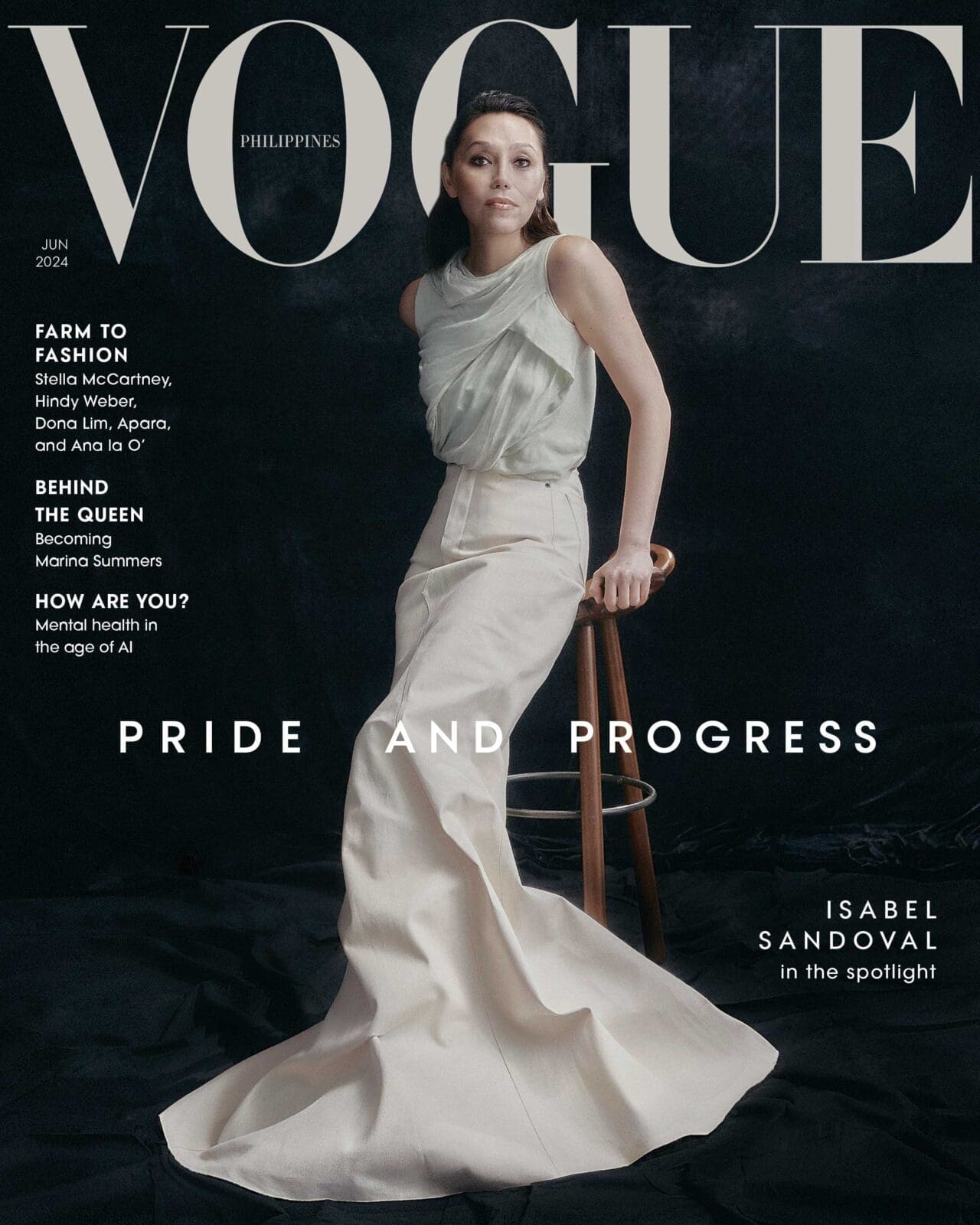Photographed by Karl King Aguña for the June 2024 Issue of Vogue Philippines.
Photographed by Karl King Aguña for the June 2024 Issue of Vogue Philippines.
Designers Hindy Weber, Dona Lim, Ana la O’, and Apara co-owners Jessica Choy Daez, Ariana Coronel Go, and Eya and Nana Uy gather at the Holy Carabao Farm in Laguna for a conversation driven by their work’s purpose: slow fashion.
In order to arrive at Holy Carabao Farm, visitors must abide by a detailed set of instructions. How it starts: Do not follow Waze. How it ends: Park outside. And enter on foot.
Contrary to what you might expect, what greets you immediately through the nondescript black gate isn’t a vast grassland (although there is one), but rather an events place to the left, a school to the right, and a cafe straight ahead. Enter the former, called The Farm Shed, and you are welcomed by Hindy Weber, fashion designer and co-founder of Holy Carabao—a regenerative farm that offers classes, tours, and events centered around nutrition and biodiversity. It’s “where nature thrives, and connections flourish” their website reads.
Inside, the usual flurry of a Vogue shoot is exchanged for a leisurely pace. It’s siesta time when Jessica Choy Daez, Ariana Coronel Go, and twins Eya and Nana Uy—the co-owners of minimalist brand Apara—arrive, while womenswear designer Dona Lim and knitwear designer Ana la O’ join them not long after. They meet each other for the first time, then gather around the center table for a meal.
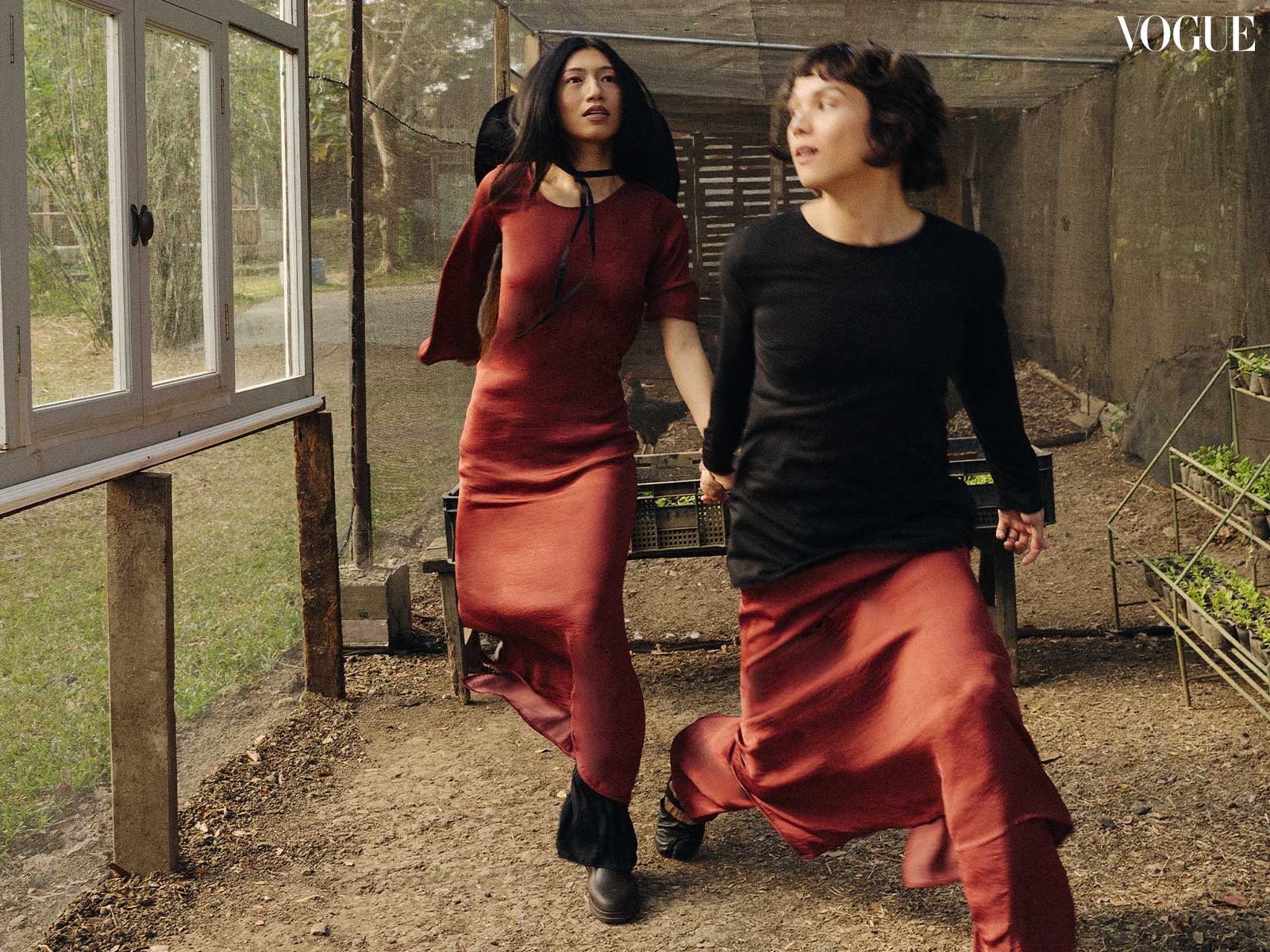
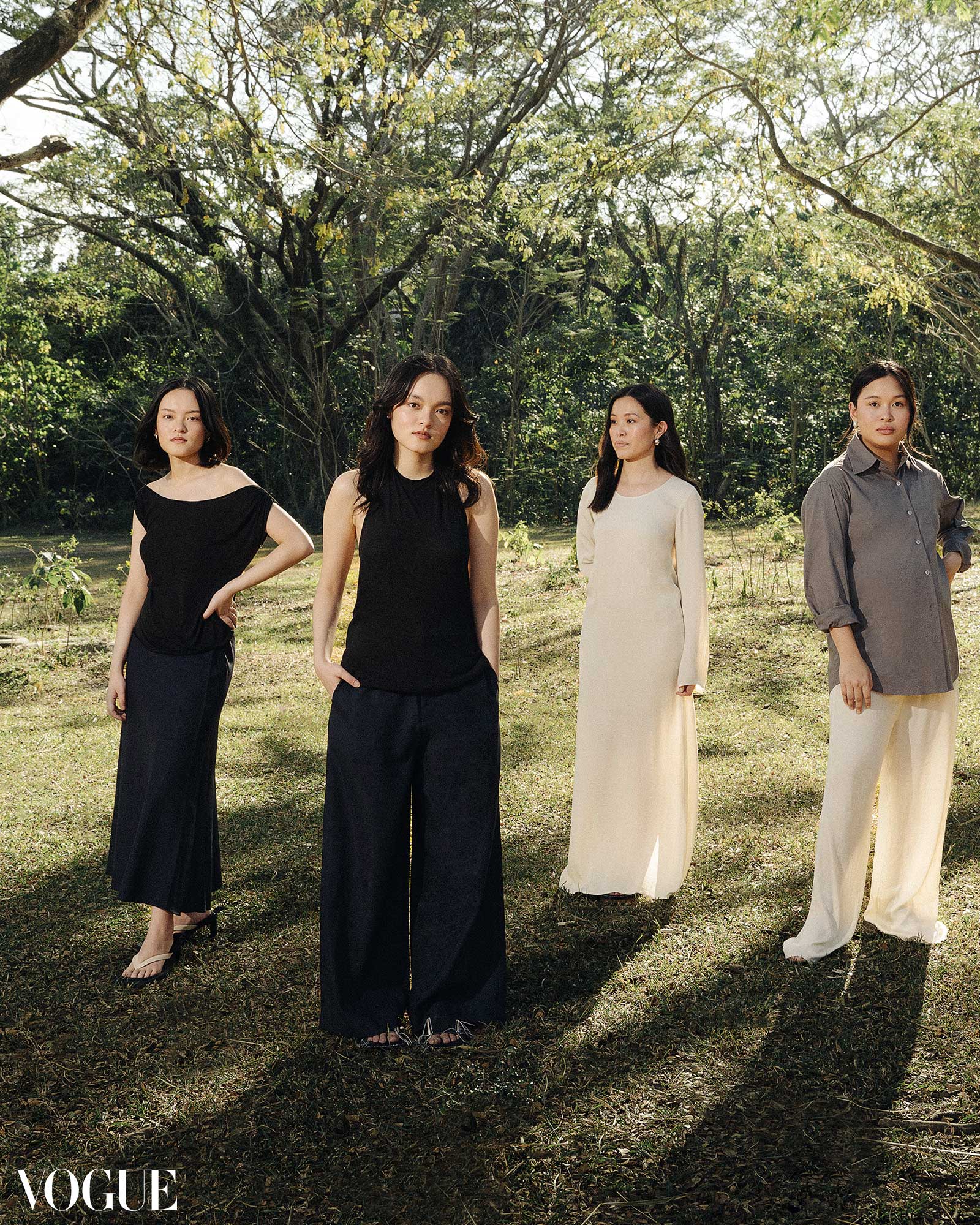
Their late lunchtime topic of choice? Personal histories, recent undertakings, then eventually, the reason they came together in the first place: slow fashion.
The movement, which is often simplistically defined as the antithesis of fast fashion, was shaped in large part by the Slow Food Movement founded by Italian activist and author Carlo Petrini in 1986. Research professor and design activist Kate Fletcher essays its roots for The Ecologist in 2007: “Slow Food links pleasure and food with awareness and responsibility. It defends biodiversity in our food supply by opposing the standardization of taste, defends the need for consumer information and protects cultural identities tied to food.”
For Fletcher, who draws a sartorial connection and coins the term, slow fashion is therefore about “designing, producing, consuming and living better. Slow fashion is not time-based but quality-based (which has some time components). Slow is not the opposite of fast—there is no dualism—but a different approach in which designers, buyers, retailers and consumers are more aware of the impacts of products on workers, communities and ecosystems.”
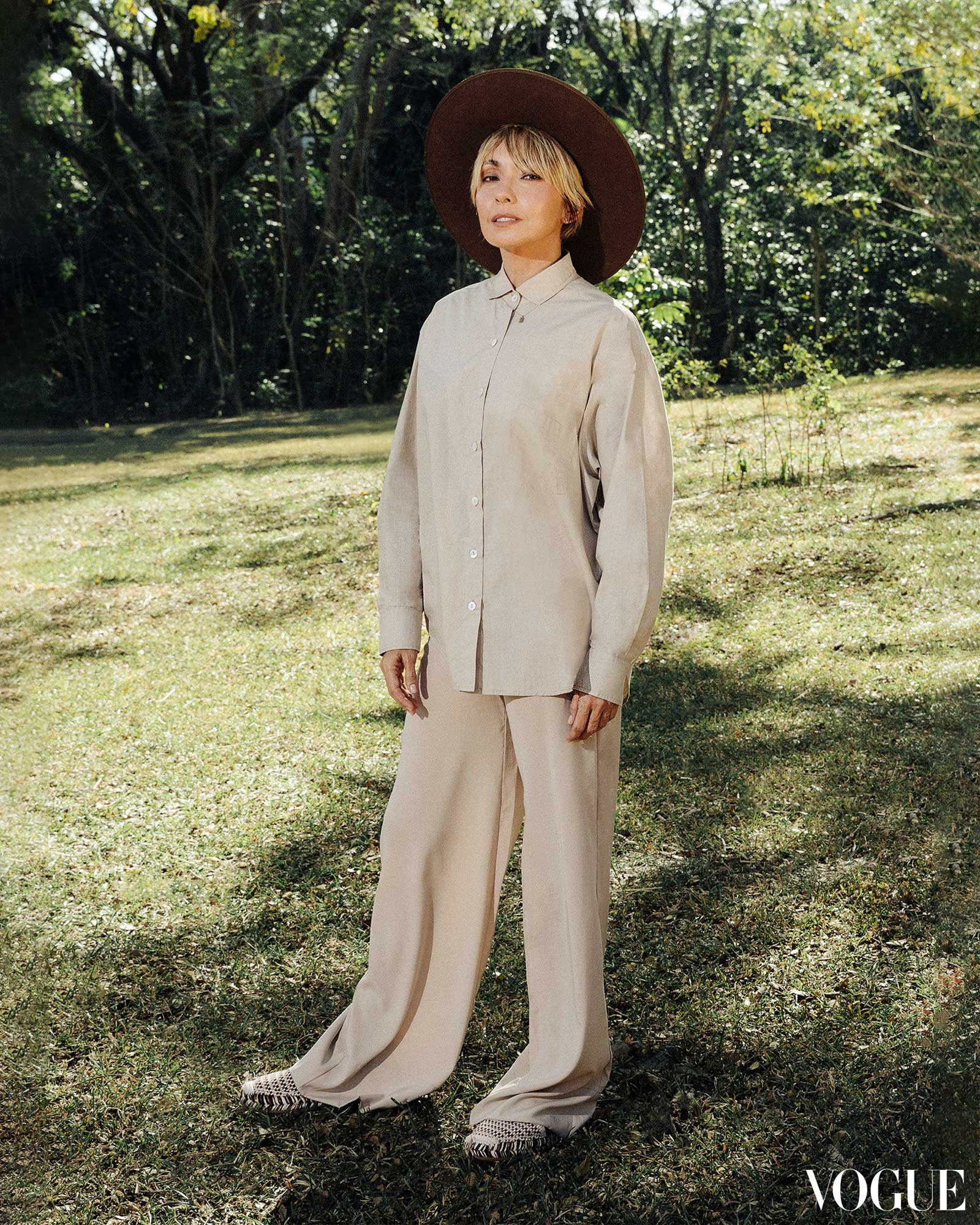
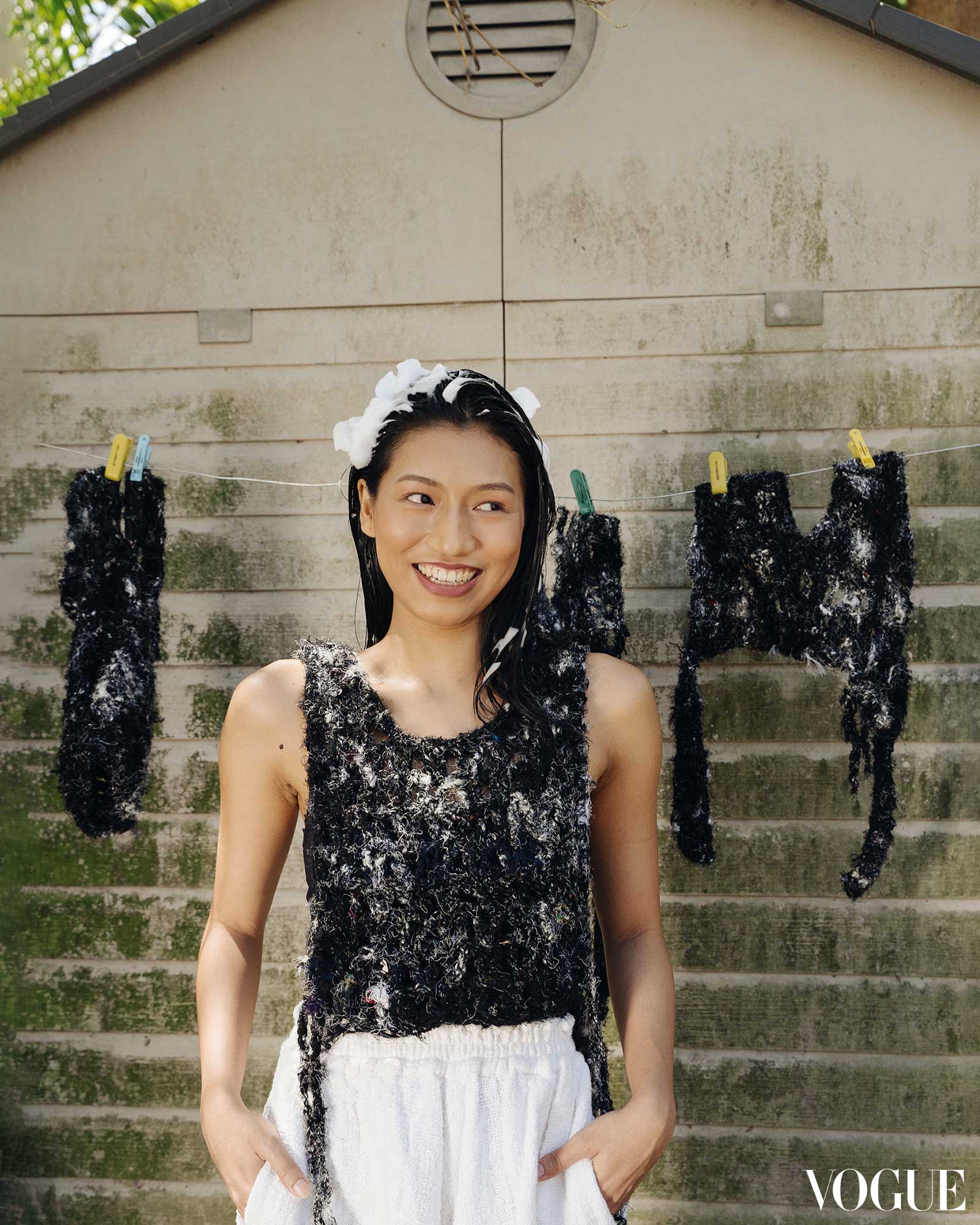
Farm to food to fashion is a progression that resonates with Hindy, who in her own words describes the process as where the wellness of people and the planet are always taken into consideration. “By people, I mean everyone from start to finish, not just the consumer. It starts with the farmer, to the fiber gatherers, the dyers, weavers, traders, cutters, sewers, designers, salespeople, and back again,” she emphasizes.
As a young girl, Hindy was fascinated by nature, and often told adults around her that she wanted to become a wildlife scientist and conservationist. She grew up watching David Attenborough’s natural history series Life on Earth and reading National Geographic magazines. Diane Fossey and Jane Goodall were her icons.
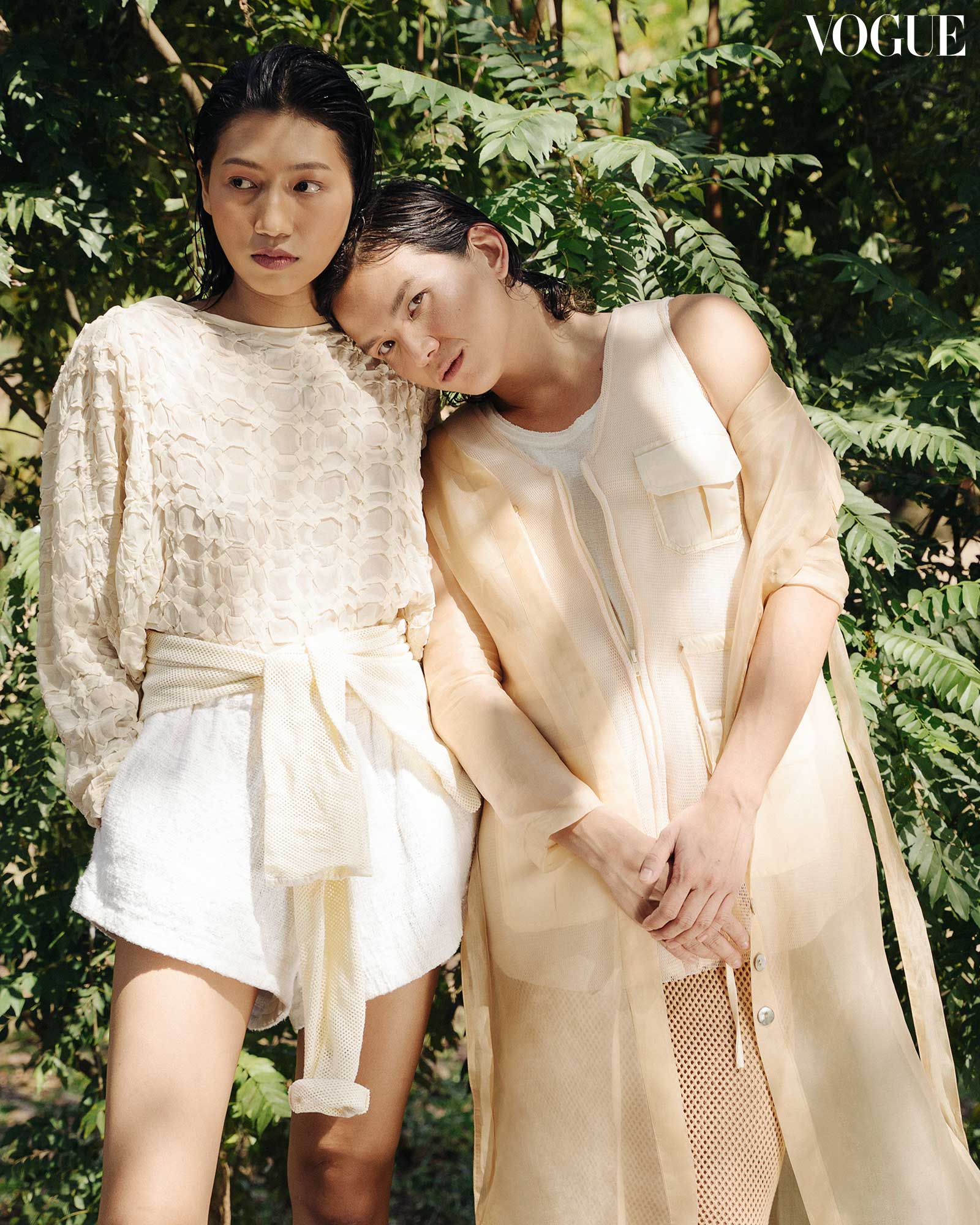
She was simultaneously immersed in the arts, watching Hollywood flicks, perusing fashion magazines, and getting fitted for custom garments at the modista as early as age eight. She went on to work in fashion for 11 years, took a hiatus for eight, then launched her brand in 2019 after moving to the farm with her family. Marrying her love for nature and fashion, her label’s offerings are now anchored on natural dyes and premium, raw, high-grade linen, hemp, bamboo, organic cotton, and silk; colors and materials of the earth.
Conscious materials are front and center for Ana, too. Specializing in knitwear, she started by using raw organic cotton yarns from the HABI Philippine Textile Council. “I’ve done a lot of my training and work in the Philippines,” says the California-raised designer, “so I want to work with what’s available. Also, making things is expensive. So it’s twofold, you want to celebrate the place you’re in, but it also is just easier to source.”
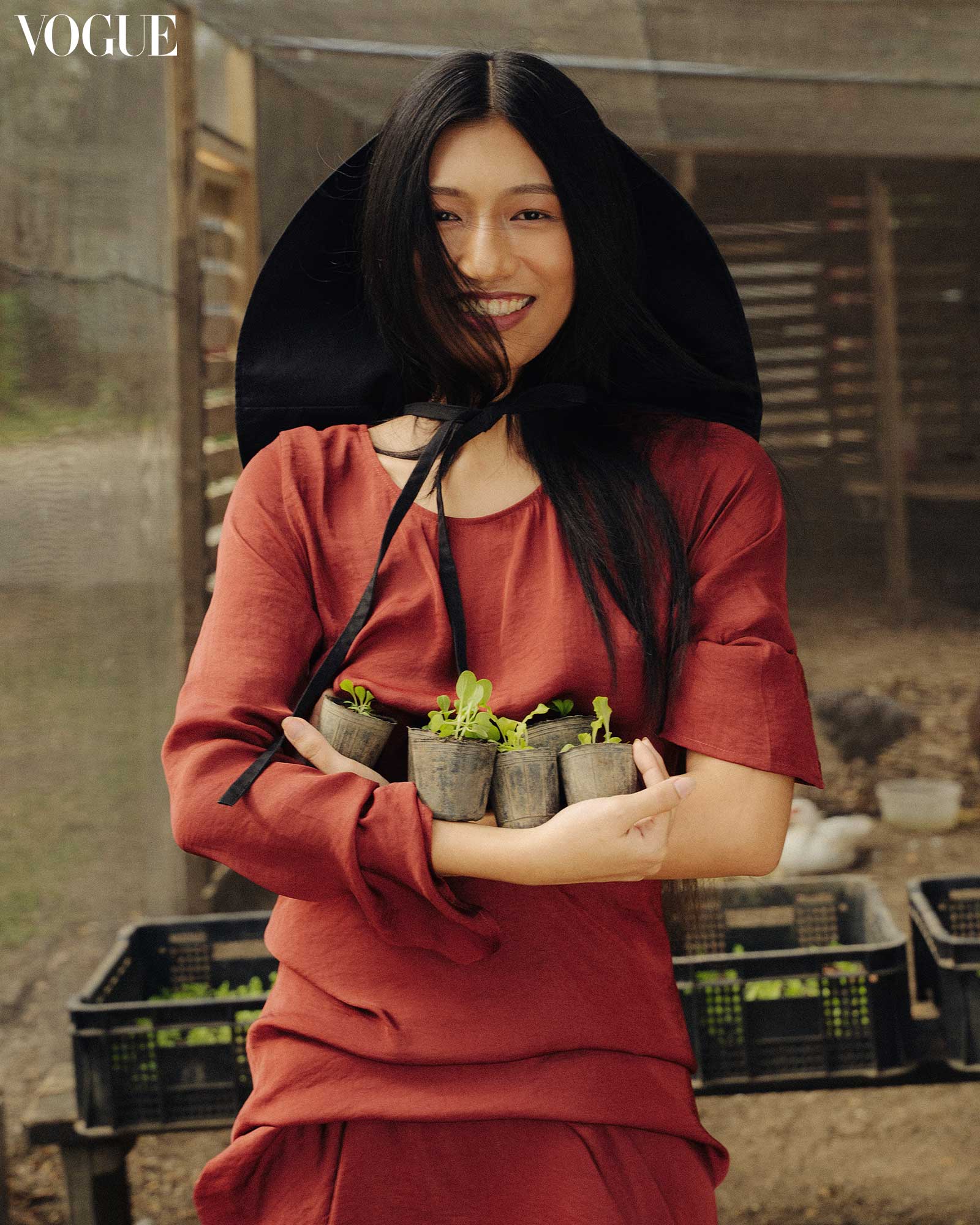
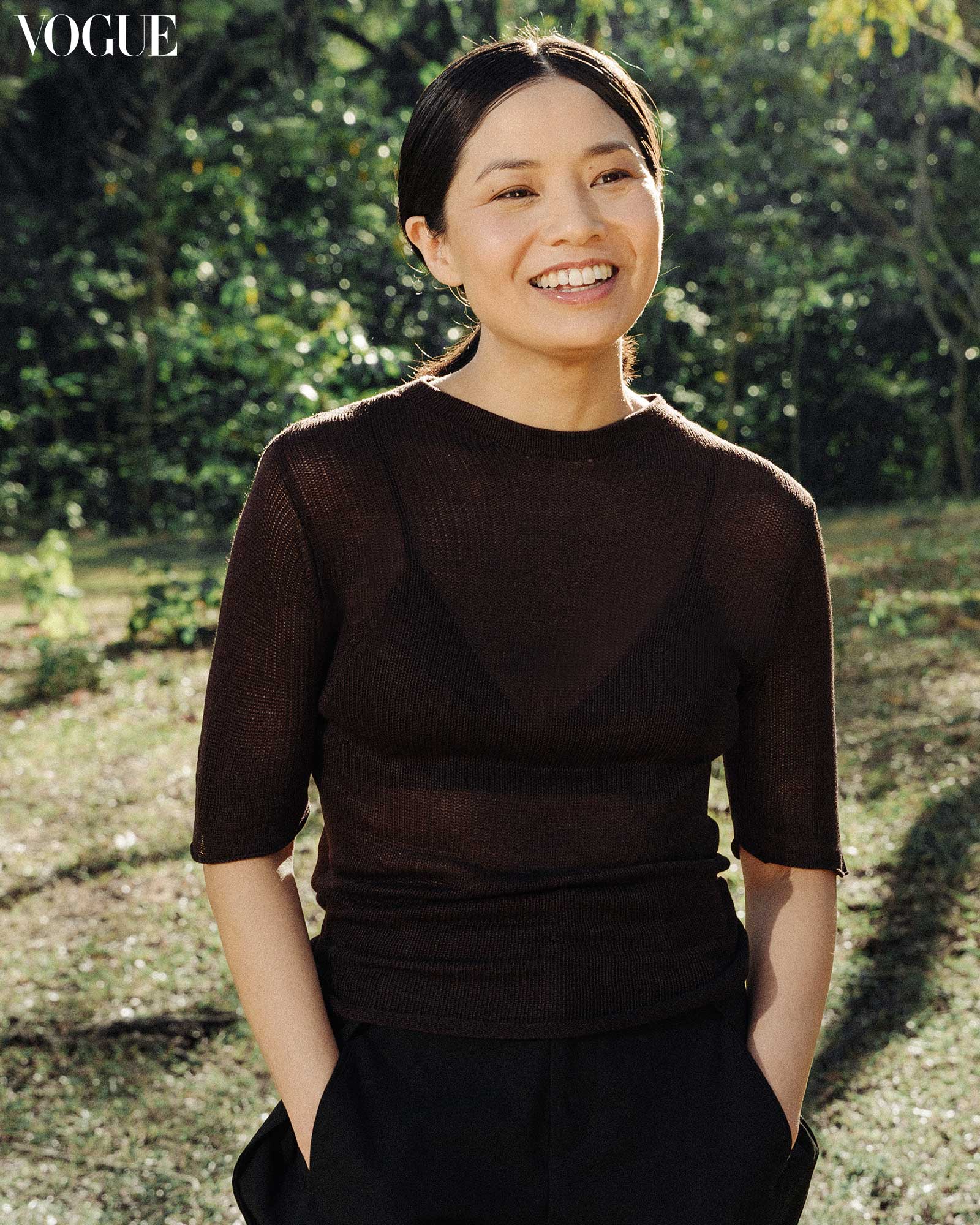
At university, she took up English literature at UCLA, and ended up working at a law firm in Los Angeles after graduation. In her second year there, she grew tired of reading, writing, and sitting all day, and gradually returned to visual arts through night drawing classes. “[I had] no indication of, like, would this be a career or am I any good at it,” she says with a laugh, “[I was] just needing to do it impulsively.”
The Central Saint Martins and The Row-trained designer’s namesake brand was born in 2020 by necessity of circumstance. The end of a work visa compelled her move to Manila, in 2019 where she found a studio space to start creating. She admits that it took her a while to land on her feet, and she didn’t do anything fashion-related in that first year apart from small projects. “It was like a very solo sabbatical, where it was really like painting and drawing and dyeing by myself with no understanding of what the outcome would be.” With the help of fellow knit designers Rod Malanao and Lulu Tan-Gan, she found knitters and a factory to work with.
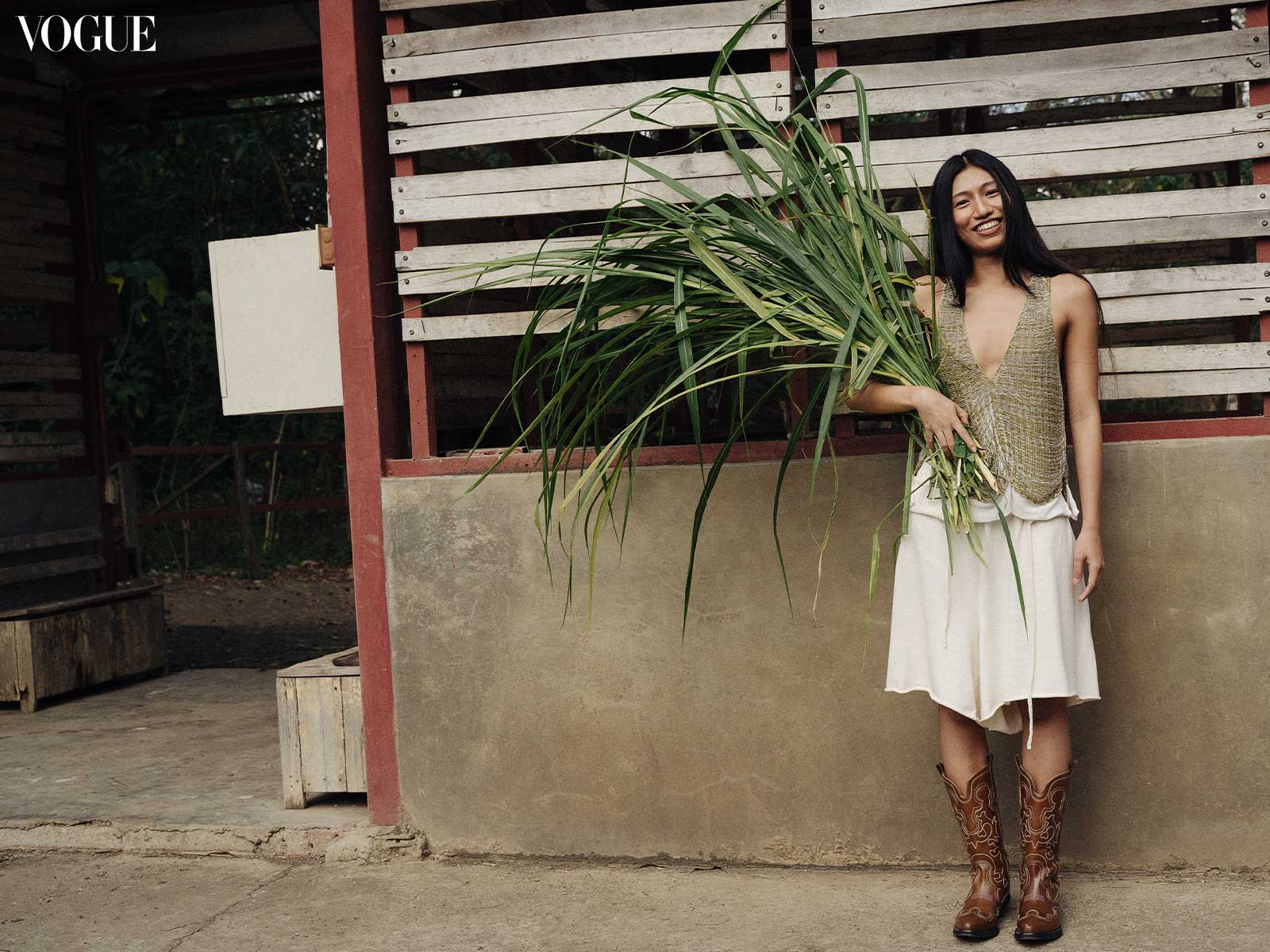
“I think that people tend to think that it’s understated,” Ana says of her creations, “but actually, when you look a little bit closer, it’s a little bit weirder and more perverse than you think it is.” Underscored by a sense of humor and irreverence, Ana’s knits explore both exposure and risk, protection and practicality. She fashions keyholes and slits in delicate yarns for now, but hopes to work with bulkier yarns in the future.
Similarly, the four women behind Apara are highly considerate of the female form, making dresses, skirts, tops, and trousers that skim the body. The self-proclaimed small-batch brand champions seasonless dressing, making basics to be worn over and over. The quad met in preschool, but their sisterhood grew throughout elementary and high school, then during a post-graduation trip to Europe. Career-wise, they’ve taken separate paths: Jessica is in retail business operations, Ariana is a marketing agency owner, and Eya and Nana are speech-language pathologists. Apara, which they note is a completely made-up word, is a creative undertaking whose genesis was a long lunch during the pandemic.
“Everything we do goes back to the soil where we grow what we eat”
“We all collaborate in the design process, which is why it’s great to have four minds who have similar tastes yet individual styles,” says Eya. None of them have a design background, but Jessica notes that this forces them to be creative and work closely with their pattern-maker. From the beginning, they’ve partnered with a Filipino family-owned apparel manufacturer, through which they support over 5,000 workers and subcontractors, including young and aspiring sewers.
Somehow, building a brand together has enriched the Apara ladies’ decades-long friendship, and they continue to learn about one another in a new light. Ariana says that they get to share even more milestones together, and they’ve taken to picking each other’s brains. “As a bonus,” she cheekily shares, “we get to spend more time together and every meeting is an excuse to try each other’s matcha and coffee favorites.”
Meanwhile, as Apara approached design with all hands on deck, Dona Lim threw herself into it as a one-woman unit. “I got into fashion, I would say by pure serendipity,” she narrates. After graduating from a double degree program in economics and psychology in Canada, she was highly conflicted about pursuing an MBA or clinical psychology to the point that she became ill. Needing to destress from decision-making, she sought out a creative hobby and took fashion courses for fun.
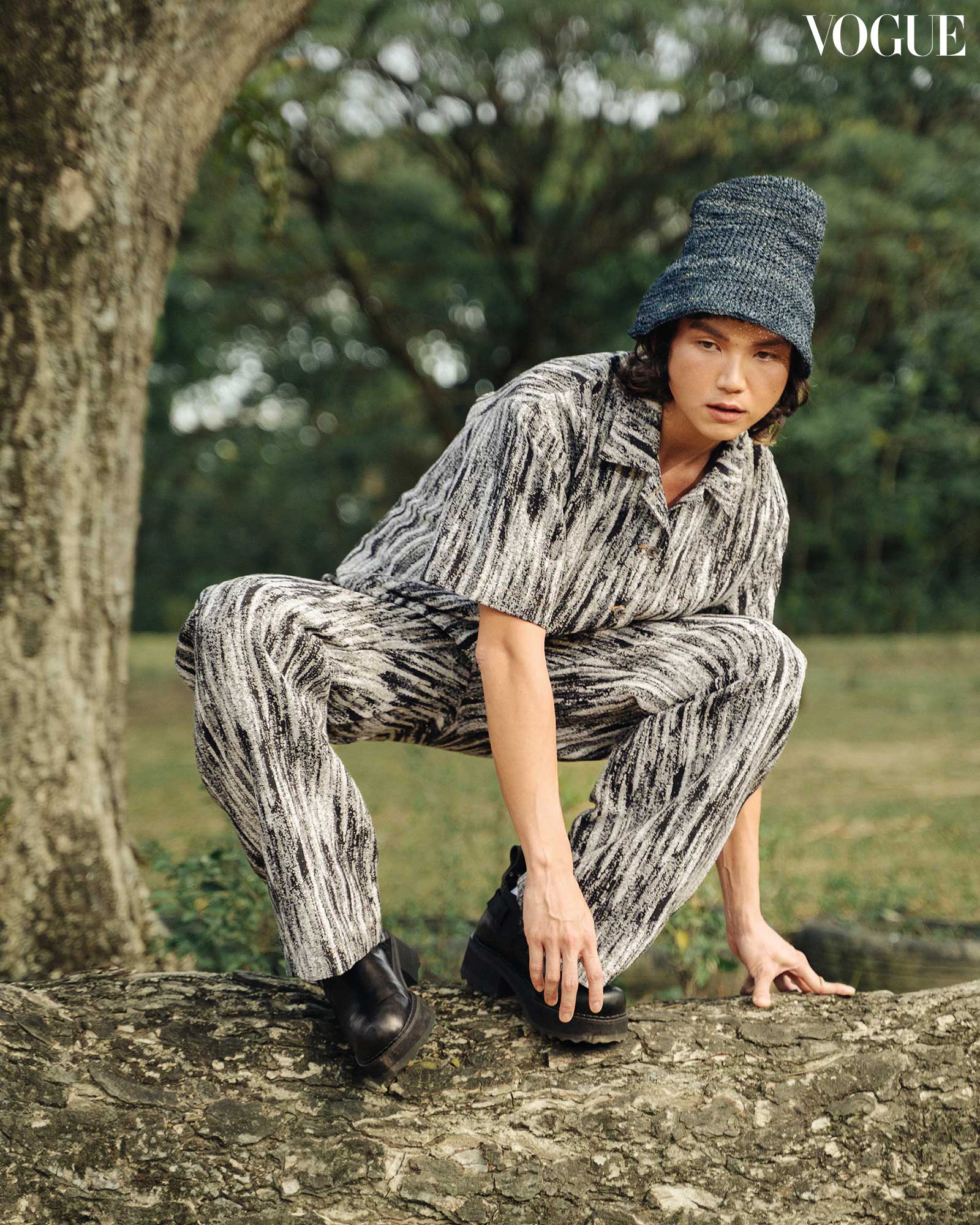

The next thing she knew, she was admitted to the Fashion Institute of Technology after submitting a few sketches over email. After completing her studies, Dona came to Manila to help with marketing the family business. She can’t remember how it happened, but one day, she decided to execute some personal creative projects. She was obsessed with natural fabrics but couldn’t find exactly what she wanted in the market for a price she was willing to pay. So, she decided to make her own clothes.
She works with those materials to this day; a commitment that resulted from a long period of wanting to pursue fashion while grappling with the detrimental effects it has and continues to cause. “I can be very, very patient, just so that I can implement the vision that I have,” the creative director reveals. And this vision has certainly taken shape: despite the limiting factors of sourcing and costs, Dona has designed wardrobe staples crafted from Tencel fibers, and bamboo, cotton, silk and recycled polyester fabric, among others.
While she devotes time to researching and developing for her brand, Dona takes pride in a life lived mostly offline. “I think boredom encourages us to think more deeply,” she explains. Her days consist of sharing meals with friends, spending time with her kids, or tending to her farm, relishing in some quiet time and meditation.
“My farm is an organic farm,” she says. “Regenerative type, where we learn to put back into the soil what we take. Going there reminds me of the importance of our work in fashion; how interconnected everything is. Everything we do goes back to the soil where we grow what we eat.”

